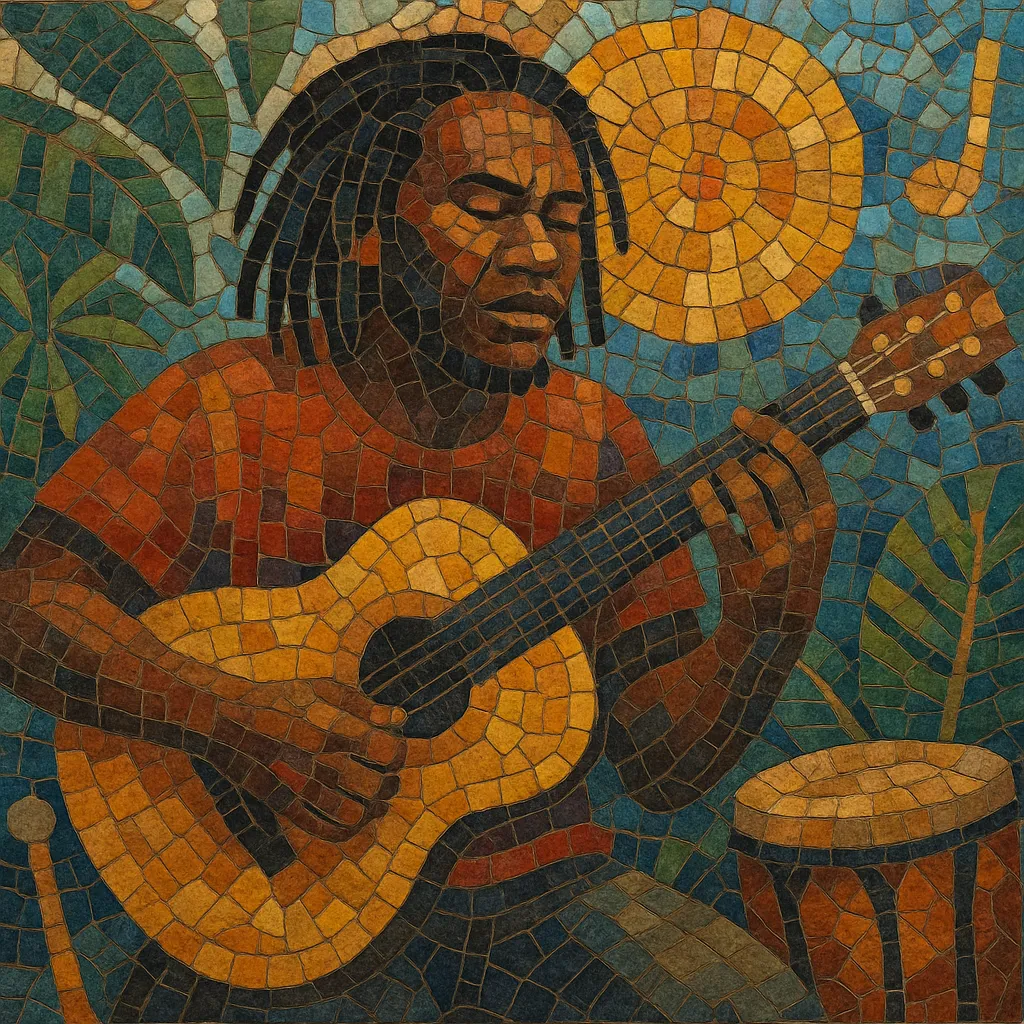Kaneka is a contemporary popular music of the Kanak people of New Caledonia that emerged in the 1980s. It fuses reggae’s off‑beat guitar and heavy bass with zouk’s danceable 4/4 pulse, modern pop production, and traditional Kanak vocal polyphony.
Songs are commonly performed in Kanak languages (such as Drehu, Nengone, Paicî) as well as in French, and often feature call‑and‑response choruses. Instrumentation typically includes electric guitars, bass, drum kit or drum machines, keyboards, and hand percussion, with layered backing vocals that reference ceremonial and community singing.
Lyrically, kaneka frequently addresses social life, love, cultural pride, and the archipelago’s political realities, making it both a dance music and a vehicle for identity and storytelling.
Kaneka took shape in the mid‑to‑late 1980s in New Caledonia amid a broader Pacific and global "worldbeat" moment. Young Kanak musicians, inspired by Jamaican reggae and Caribbean zouk, began blending those modern dance grooves with local vocal traditions and languages. Affordable keyboards, drum machines, cassettes, and community radio helped the first recordings circulate.
Through the 1990s, kaneka crystallized as a recognizable style. Local bands professionalized, studios in and around Nouméa improved, and festivals and community events gave the music a stage. Radio support and tape/CD distribution expanded its audience beyond tribal areas to the whole territory and the diaspora in France and Oceania.
Digital production tools and home studios allowed a richer palette—tighter rhythm sections, brighter synths, and smooth vocal stacks—while preserving the genre’s characteristic off‑beat guitar and call‑and‑response hooks. The music traveled across Melanesia and interacted with regional "Pacific reggae" scenes, reinforcing a shared Oceanian popular sound.
Kaneka remains a living, adaptable style: some acts lean toward pop and R&B sheen, others toward rootsy reggae, and others foreground traditional polyphony. It continues to be a soundtrack for dance, celebration, and cultural affirmation in New Caledonia.


